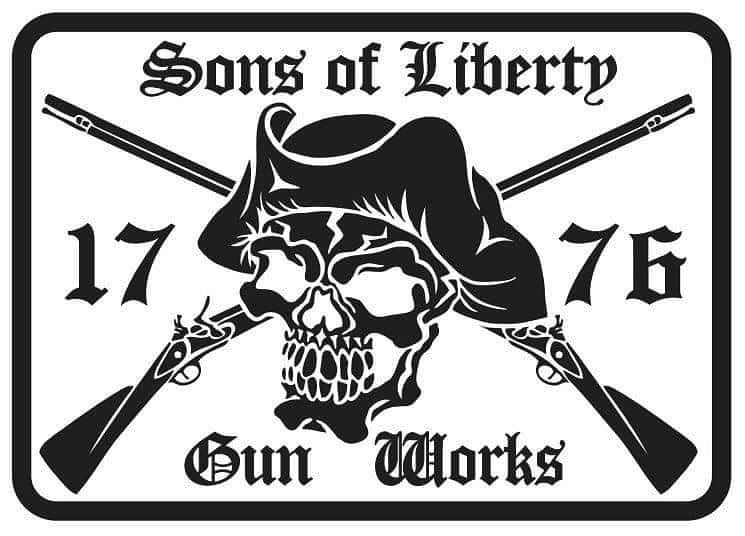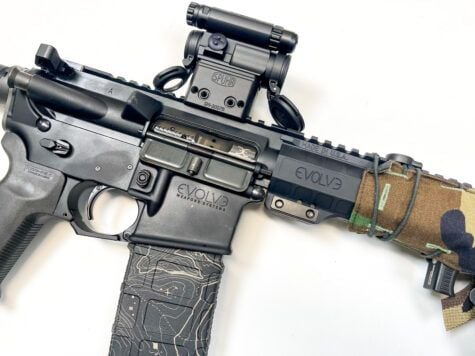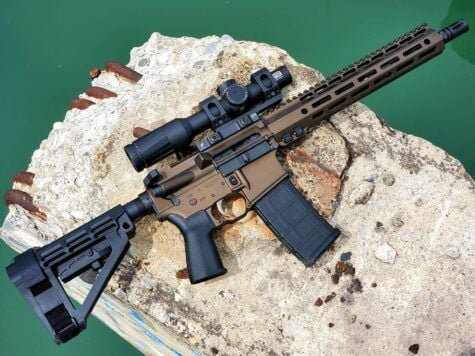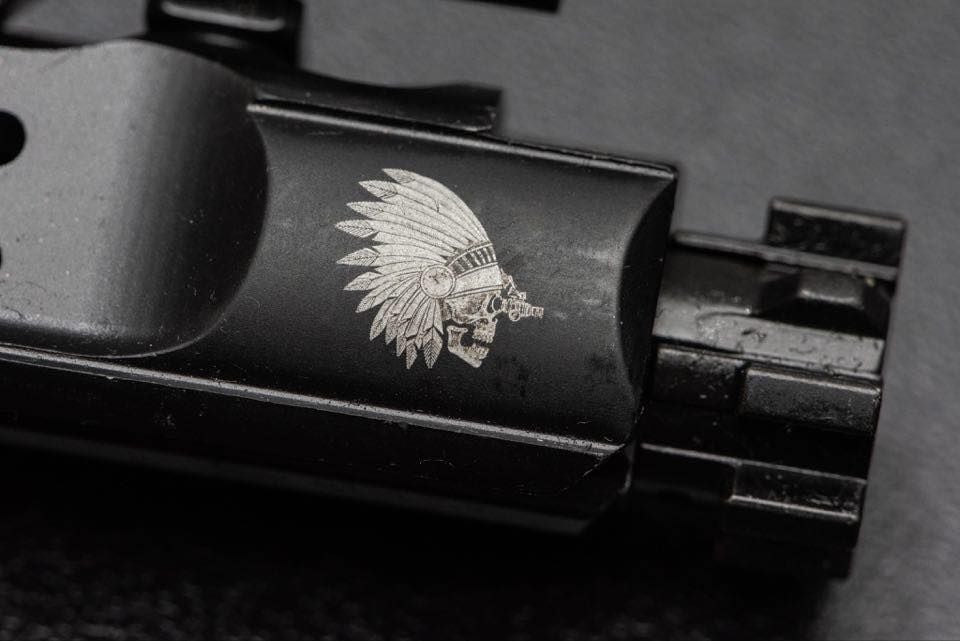
With so many buying ARs of varying levels of quality, we felt it was a good time to reach out to Mike Mihalski of Sons of Liberty Gun Works to discuss AR Bolt Carrier Group basics. His company is known for a great many things, including high quality bolt carrier groups done right. Read on to learn why a quality bolt carrier group matters, and why you might consider an upgrade if you are uncertain about what you’re currently running in your build.
Q: Mike, can you please describe the purpose of the bolt carrier group and why it is so important?
Mike Mihalski – Sons of Liberty Gun Works – I look at the bolt carrier group as the heart of the gun. If the gas port is the lungs, then the bolt carrier group is the heart. It’s what drives the entire gun. If you look at the AR platform’s cycle of operations, everything happens around the bolt carrier group. Locking, unlocking, extracting, ejecting…all of it begins with the bolt carrier group. So when someone who might be newer to the AR platform wonders why the bolt carrier group is such an important part of their firearm, they don’t need to look any further than that. It’s important to know that if your bolt carrier group is not well made, it can really cause many problems.
Suppose you have a well-made rifle that has spontaneously stopped working due to reaching the end of its service life. In that case, the stoppage is likely because of an issue with the bolt carrier group. It’s going to be an ejector, an extractor, a loose bolt carrier key, a broken bolt, a broken lug.
On the other hand, if you start out at the beginning of a rifle’s life with a bad bolt carrier group, you’re going to run into problems a lot sooner, or at the very least, you will run into issues in a very unpredictable way. I can assure you that unpredictability is not a feature you want in a rifle you may need to depend on. Having a quality bolt carrier group in your gun increases the predictability of performance. We can guess how long a gun will work, but when you skimp on your bolt carrier group, you simply cannot predict performance at all.
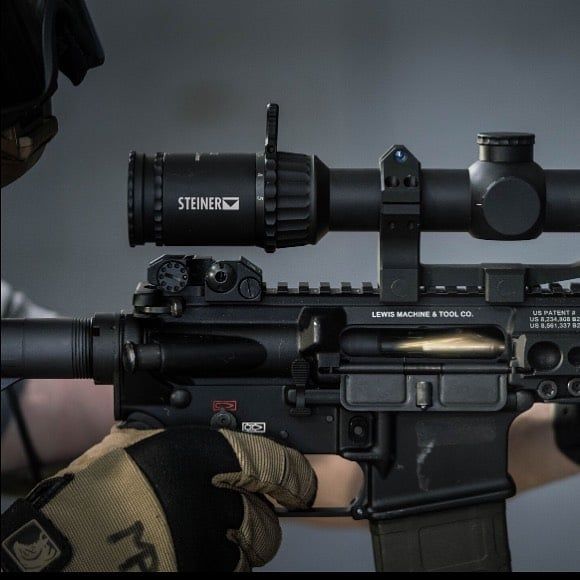
Q: I think a big issue with bolt carrier groups is that they simply all look the same to a lot of people. Can you address that?
Mike Mihalski – Sons of Liberty Gun Works – If you ask people who have served in the military, “how many times did you see a broken bolt or a leaky gas key in a military rifle?” The answer you’ll get is that it is very rare. If you did see it, it was because the part was at the extreme end of its service life.
However, out here in the civilian world, we see it all of the time. It’s like the ‘wild west’ of bolt carrier groups. Sure, they might look the same on the surface. The difference is there is a very specific Mil-Spec standard to which a bolt carrier group must be made. Unfortunately, the term “Mil-Spec” has become so bastardized, people don’t really know what it means. Materials are particular for everything….individual HP and MPI testing, the fasteners, the torque values…everything.
Why is that attention to detail so important? Like anything, a bolt carrier group is only as strong as its weakest point. So, suppose you sacrifice on the extractor, ejector, firing pin, key, fasteners, or the bolt itself. In that case, I can assure you that system is going to eventually break down.
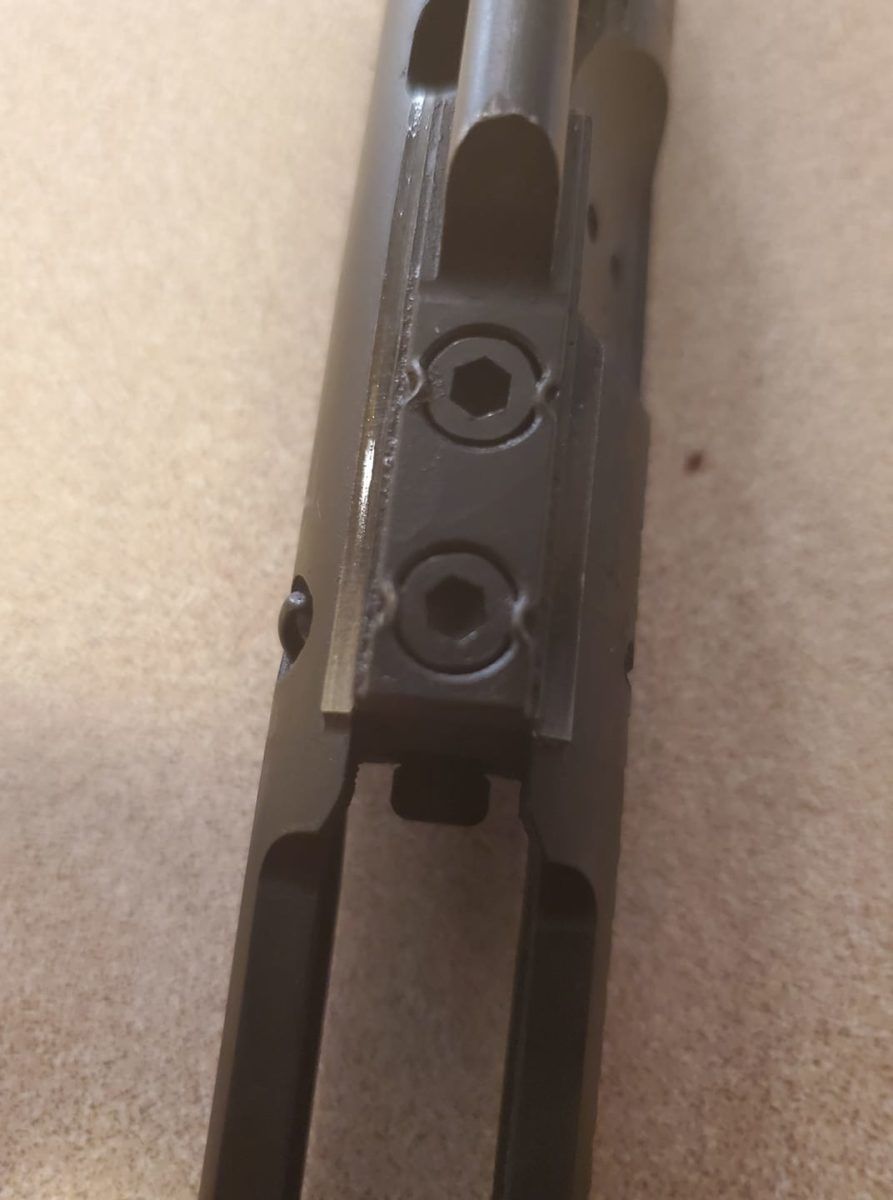
Q: It’s odd that a company would skimp on such an important part, but that does seem to be what’s going on, isn’t it? They know what the standard is, but they just don’t meet it.
Mike Mihalski – Sons of Liberty Gun Works – I’ve had that discussion with a few people in the industry. I’ve come to the conclusion that many just don’t know what the standard is. On top of that, you have to remember that a lot of stuff on the market is not built for performance. It is built for cost. This is an important thing to remember as you shop for something as crucial as a bolt carrier group for your rifle. You have to understand that very few companies are actually performance-based, where everything they do is based on performance.
Out here in the civilian world, much what you see is based on marketability, margins, and things like that. Doing things right is more expensive. Using the right materials, the correct springs, even the right finishes, is just a more expensive process. If you’re building strictly for margin, then you’re going to skip a lot of the things that end up costing more money. A proof load costs more money. Certain fasteners are less expensive. Not putting the correct black insert in the extractor saves you some money.
When I teach armorer’s classes, I have all 25 students completely tear their bolt carrier group down. In every class, there are multiple examples of incorrect extractor springs, no black inserts, fasteners that break loose, staking that is not engaged.
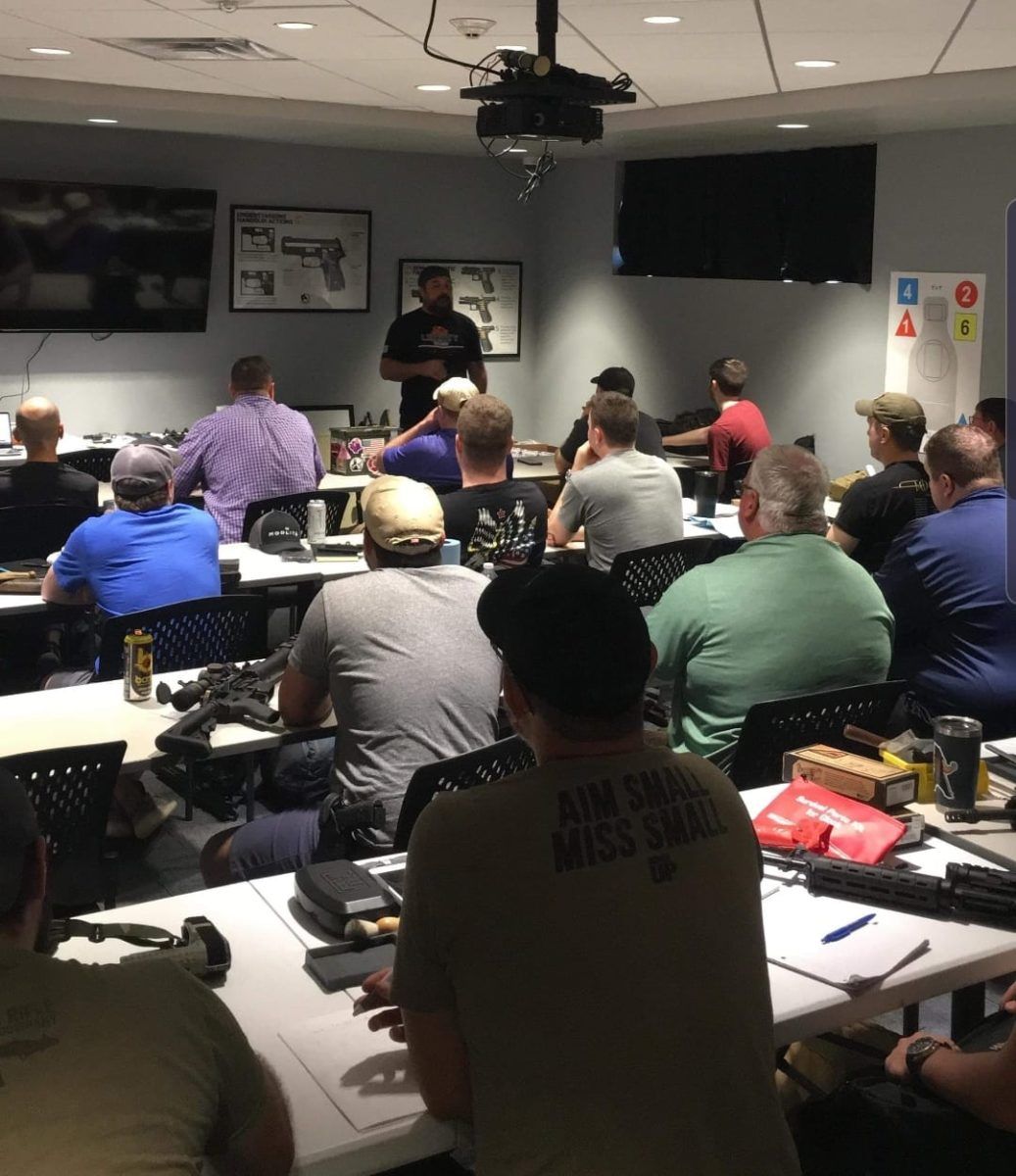
I also find that when we take a look at bolts that are broken, more often than not, it will be an improperly heat-treated 9310 steel bolt. You typically don’t see premature bolt failure with 158 carpenter steel bolts, especially ones that have been individually HP tested.
People don’t realize that with well-made 158 carpenter steel bolts, about 3 percent of them will fail the HP test. I know that it has been argued by people that I respect that HP testing is destructive. There might be some truth to that…I think it might take a little bit of life off the back end its service life, but the predictability of its performance in the interim is very high. A prematurely broken individually tested HP and MPI 158 carpenter steel bolt is rare. You really don’t see it.
So, let’s say you use different materials, you don’t test, and you don’t heat treat. In that case, I’m NOT saying the bolt is GOING to fail. Rather, I am saying that the probability of it failing is considerably higher than if you had done all of those things.
Q: If you have a budget rifle, is it as simple as just swapping out your existing bolt carrier group?
Mike Mihalski – Sons of Liberty Gun Works – I just had this conversation earlier today. While replacing a barrel takes some type of mechanical knowledge…taking a bolt carrier out of a gun is very simple. Replacing your AR’s bolt carrier group is really as simple as pushing a pin. So, yeah…you can wait until you experience a failure, or you can replace a bolt carrier group at the outset.
Again, you may have a bolt carrier group that skipped some of the steps that we just talked about, and you’ll never experience a failure. That does not mean that those bolt carriers are not significantly more prone to failure than ones that have not skipped those steps. I will say if you are waiting until failure to figure that out, I hope it does not fail at a critical time where the rifle was needed.
Q: What does a bolt carrier group failure look like? What kind of things can happen?
Mike Mihalski – Sons of Liberty Gun Works – A lot of common malfunctions are centered around failures to extract or failures to eject. I would note that this is on a well-made rifle. In this circumstance, that rifle may be getting near the end of its service life after a lot of use and abuse.
However, if those parts are not done right from the very beginning, you might start to experience those types of failures right away. It’s really very simple – If the brass cannot come out of the chamber, then you cannot load another round in there. If you want to boil the entire cycle of operations down into two steps, it’s basically “make a hole, and then fill it.” You want that brass coming out of the chamber, and you want that next round feeding in. That’s the job of the bolt carrier group.
Moving on…one of the most common causes of short-stroke malfunction is going to be a leaky gas key. This can be because a fastener has broken in there, or a fastener has backed out. Unfortunately, that is not something you can visually inspect. Typically you’ll see failures to lock on the last round, and that will start getting progressively worse up until the gun just fails to cycle. I see leaky gas keys as a widespread problem.
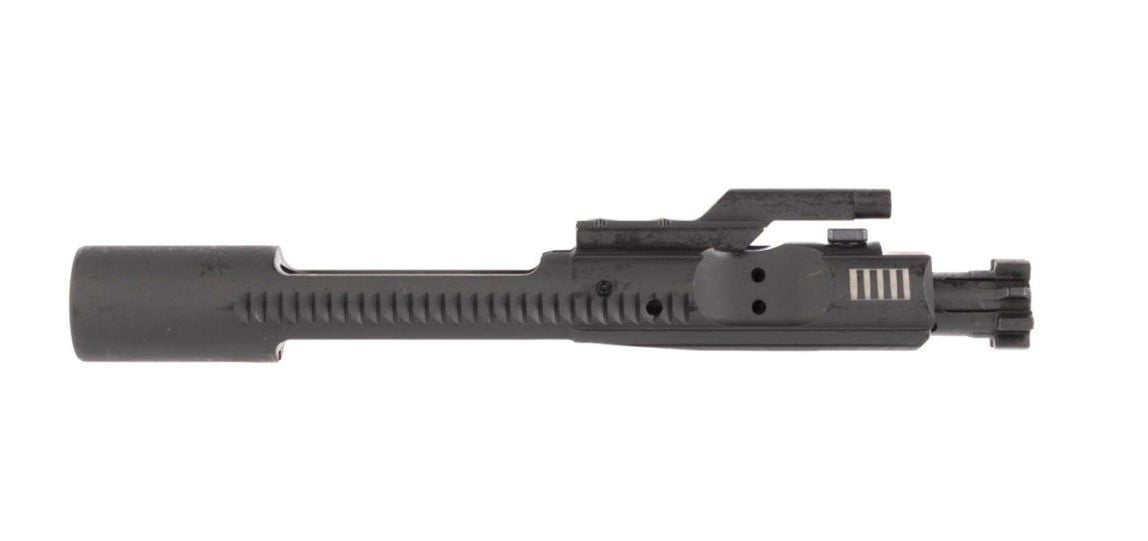
Sons of Liberty Gun Works AR-15 .223/5.56 Bolt Carrier Group – Phosphate
Mike Mihalski – Sons of Liberty Gun Works – Another thing…I don’t have a problem with Nitride finished bolt carrier groups, but I will tell you that if you were to look at the go/no-go gauges, the textbook diameter for the inside of that carrier key is .180. No-go would be up to .182. If you were to put a gauge in there, your .180 should fit perfectly because that’s the internal dimension it’s supposed to be. But if a .182 gauge will go in there, I would say that the gas key’s internal dimensions are too large.
If you look at a lot of the Nitrided carriers out there, the .182 gas key goes in there without any problems. This is because that key was machined as if there was going to be chrome lining inside. When you don’t do the chrome lining, and simply QPQ treat it, the QPQ does not add any extra layer of material. The bottom line is that the key was machined as if there was going to be extra material there, but now there is not.
Again, many of these bolt carriers are out there, and they work, but I would argue that they are slightly less efficient than a chrome-lined key.
Q: How would that be a problem?
Mike Mihalski – Sons of Liberty Gun Works – When you are using anemic, weak ammo or when the gun is really dirty, dry, or if there is any adversity being introduced to the gun, it becomes an issue. You will want maximum efficiency where there is no gas being lost, and all the gas that is coming down that tube is truly being used to drive that bolt carrier. If it is hemorrhaging inside of that key, you’re losing efficiency.
Q: I think I know where you’re going to go with this, but are there other finishes out there that you don’t like?
Mike Mihalski – Sons of Liberty Gun Works – I’ve always called nickel boron “wizard piss.” The reason is that it really doesn’t achieve what it set out to do. They say that it is “easier to clean,” but if you look at nickel boron bolt carrier groups that have even had a few rounds shot through them, there is a permanent black tinge. This is because the carbon embeds within the material. You’ll never get that out. There’s also the argument that the application of nickel boron causes something called “hydrogen embrittlement,” to where it may actually start to weaken the substrate material.
Finally, we frequently see nickel boron on bolt carrier groups that are below standard. They use that coating to overcome the fact that it is a poorly made bolt carrier group to begin with. No coating will make a bad bolt carrier group good.
Look at Sionics, BCM, Knight’s Armament, LMT, Noveske, Colt. We have respect for these brands, and I think they are almost universally seen as duty-ready, duty grade guns. You will never find a nickel boron bolt or bolt carrier group in any of those guns. But you do see them in other brands. I don’t want to disparage those other brands. Still, at the same time, I don’t think a company that puts a nickel boron bolt carrier group in their gun has figured out something that Knight’s Armament has not.
My advice for your readers is very simple. The finish on your bolt carrier group should be one of the last things you should consider when you research purchasing one.
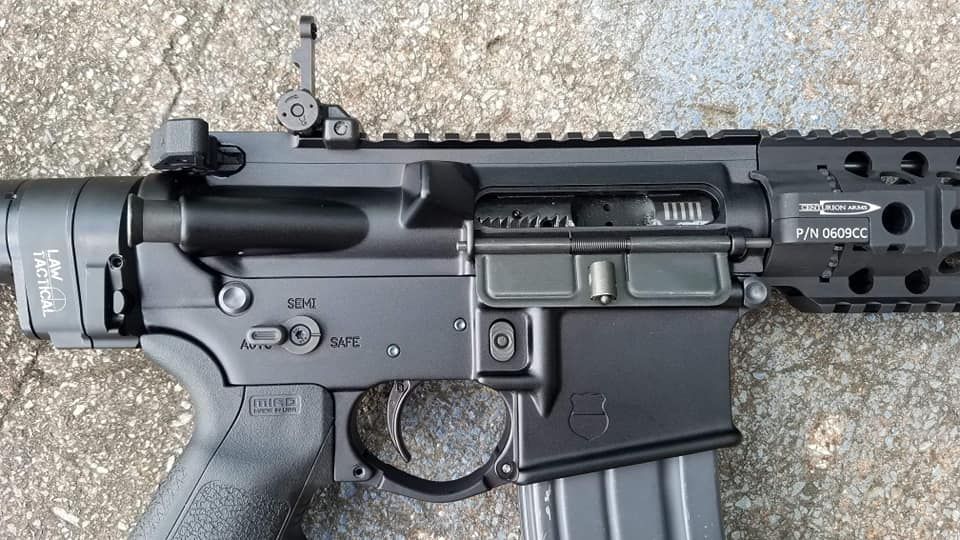
Q: Are there other things about bolt carrier groups that you think people should know?
Mike Mihalski – Sons of Liberty Gun Works – Efficiency matters. So do materials, testing, processes used, and staying as close to the original bolt carrier group formula as you can. All of that is important. When done correctly, we know guns with those bolt carrier groups work. I’d imagine that the sample size is in the millions, with round counts of billions. They work. To deviate from that, you need to have a very good reason, like perhaps a superalloy like Aermet 100 steel.
Q: Finally, let’s talk about your Sons of Liberty Bolt Carrier Groups…
Mike Mihalski – Sons of Liberty Gun Works – I think if you go through and read our specifications, we are absolutely transparent on everything. They meet every checkbox that I believe is important on a part as critical as the bolt carrier group. We built our brand around that. Everything single bolt carrier is individually HP tested, and full-auto tested after assembly.
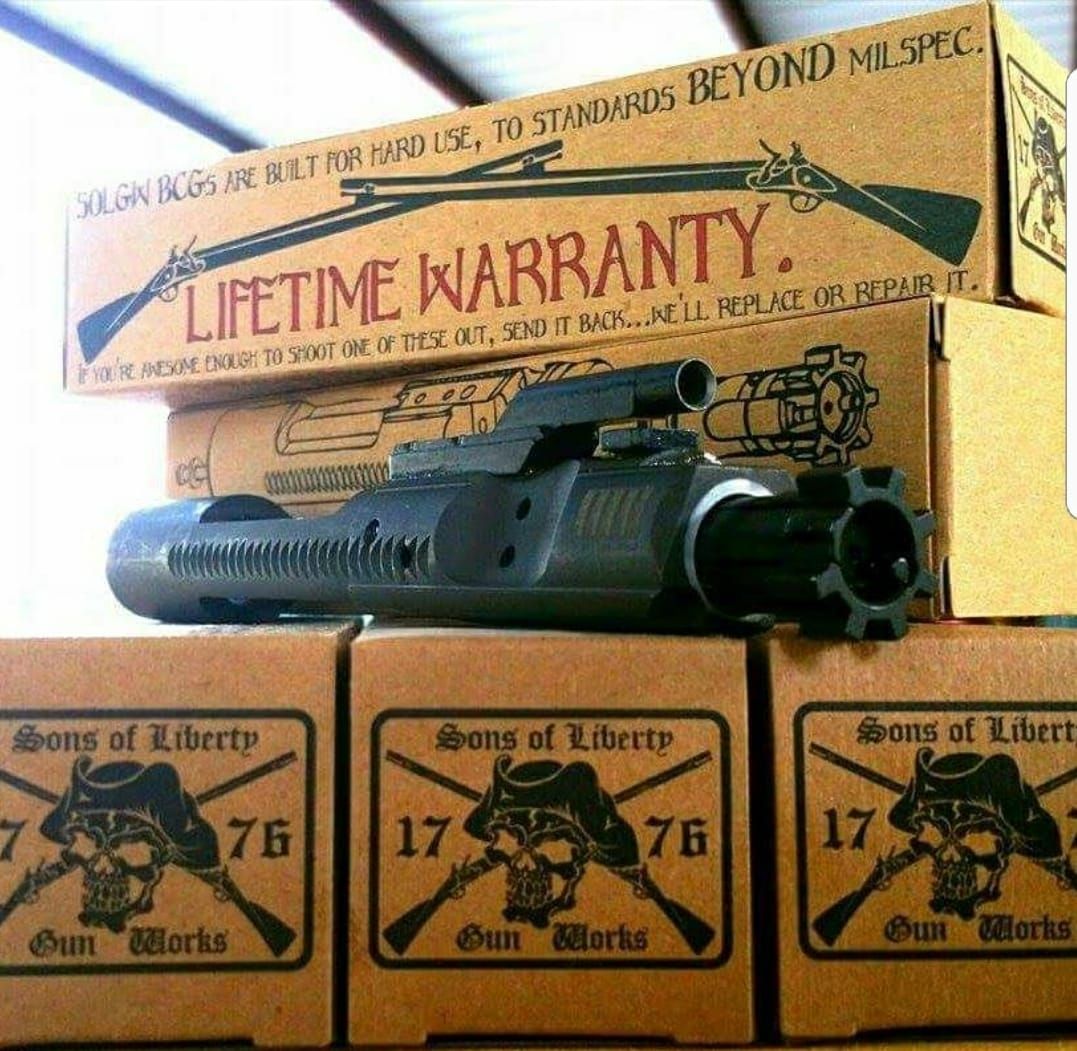
Q: Why does full-auto matter?
Mike Mihalski – Sons of Liberty Gun Works – We use full-auto because full-auto does not lie. We also try to use anemic ammo because it tells us a lot about the system’s efficiency. Those who own one know that when you take a Sons of Liberty Bolt Carrier Group out of the box, you can tell it’s been fired.
The bottom line is this: The bolt carrier group is so important that we knew if we built that part solidly, then we were doing good. We made sure we checked all the boxes, including upgraded Sprinco extractor springs.
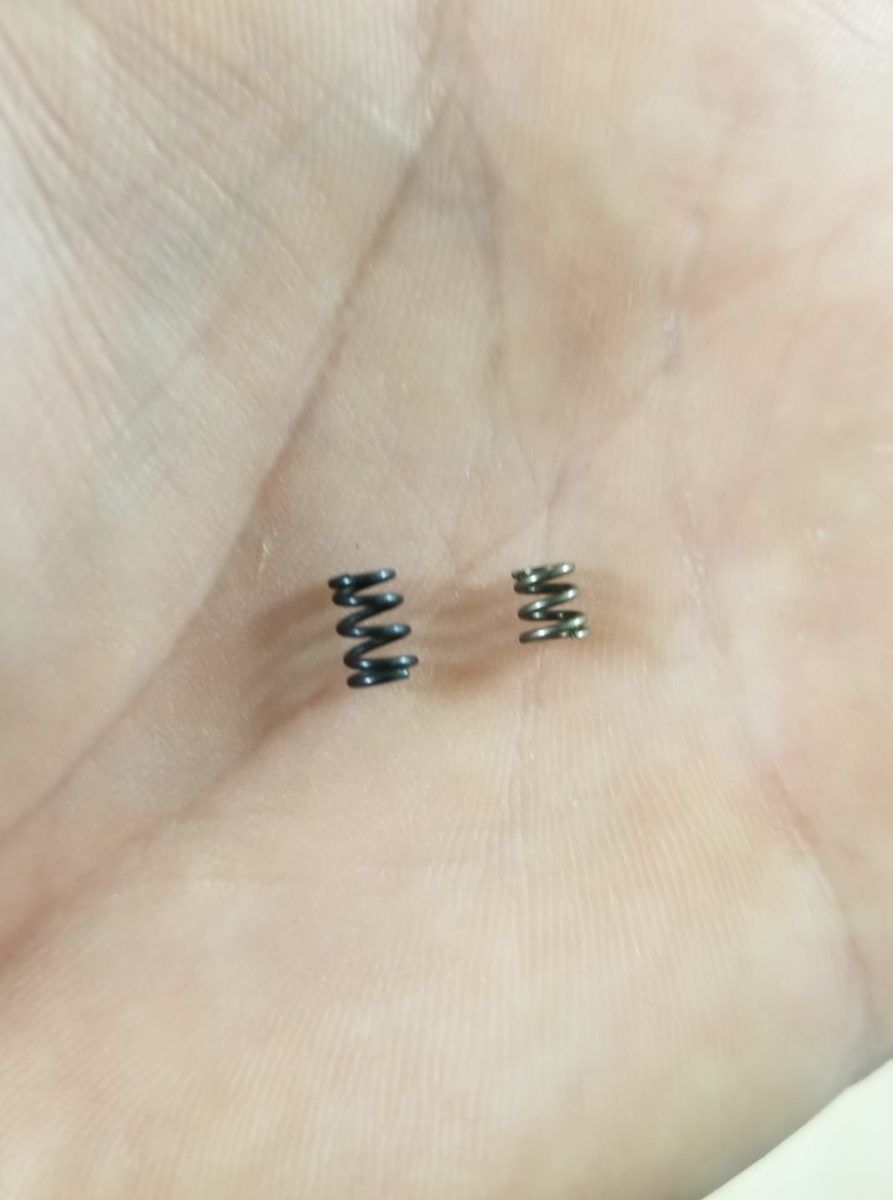
Again, if you’re boiling the cycle of operations down to ‘make a hole and fill it,’ with the Sprinco extractor spring, that brass IS coming out. Then with our buffer system, that next round IS going in. If you do those two things, you are going to have a pretty unstoppable gun. Sons of Liberty is dedicated to making sure that is absolutely the case for our customers. We know that what we are producing works. It has been assembled and examined in such a way that we have a very, very high predictability of performance.
###
